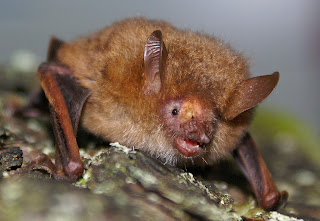In Western societies, bats are viewed with distaste and occasionally
fear. Many people find their fur and tiny teeth repulsive. Unlike birds,
bats are never brightly colored. It is fair to say they resemble demons
or gargoyles, and they have long been associated with vampires. Some of
those who suffer from chiroptophobia (a clinical fear of bats) worry
they may be bitten by a blood-sucking species. Just three of the world’s
1,200-plus bat species feed on blood, however, and they are found only
in Latin America.
In Chinese tradition, by contrast, bats are
esteemed. Images of bats decorate many old buildings, among them the Lin
Family Garden in New Taipei City’s Banqiao District. Patricia Bjaaland
Welch, in her book Chinese Art: A Guide to Motifs and Visual Imagery,
explains why: “Because both fú meaning ‘bat’ (蝠) and the sentiment fú
meaning ‘good wishes’ (福) share the same phoneme... a depiction of a bat
has come to represent good luck.”
In Chinese Symbolism and Art
Motifs: An Alphabetical Compendium of Antique Legends and Beliefs, as
Reflected in the Manners and Customs of the Chinese, C.A.S. Williams is
emphatic: “The bat is by no means regarded with aversion as in other
countries. On the contrary, it is emblematic of happiness and longevity.
The conventional bat is frequently employed for decorative purposes,
and is often so ornate that it bears a strong resemblance to the
butterfly.” Williams goes on to say that bat symbols in mansions are
often painted red – an auspicious color – and that five bats shown
together represent the “Five Blessings” (五福, wǔfú), a recurring motif
standing for wealth, health, virtue, reaching an old age, and dying a
natural death.
The National Palace Museum collection includes a
number of items adorned with bat patterns, including glazed vases from
the 1735-1796 reign of Qing Dynasty Emperor Qianlong.
The Compendium
of Materia Medica, a late 16th-century Chinese book on herbal medicine,
links bats with longevity, stating: “In the caverns of the hills are
found bats a thousand years old, and white as silver, which are believed
to feed on stalactites. If eaten, they will ensure long life and good
eyesight. The blood, gall, wings, and so on, are therefore prescribed as
ingredients in certain medicines.” Of course, no bats live for a
millennium, but some have been known to survive for almost 40 years, far
longer than other small mammals such as mice and shrews.
Bat feces
play a role in modern Chinese herbal medicine. Known by the Mandarin
euphemism yèmíngshā (夜明砂, literally “night brightness sand”), they are
believed to clear the liver and help with eye ailments such as night
blindness and cataracts. The oft-repeated claim that bat droppings
are an ingredient in some brands of mascara is erroneous. Bat feces,
however, like seabird guano, are rich in nitrogen and thus an excellent
fertilizer.
Bats are mammals; like humans, they give birth to live
young and nurse them with milk. Bats have considerably bigger brains
than birds of the same body weight, and whereas birds have hollow bones,
the bones of bats are filled with marrow.
Just as Taiwan amazes
those who appreciate birds and butterflies, the island boasts a bat
population of stunning diversity. Most bat species eat insects or fruit.
Taiwan has an abundance of both, so it is no surprise that the island
is home to an impressive number and variety of Microchiroptera
(microbats, which are generally small and insectivorous), as well as
three kinds of Megachiroptera (flying foxes, also known as megabats).
Taiwan
has 35 bat species, confirms Wu Chung-hsin, associate professor of life
science at National Taiwan Normal University and chairman of the Bat
Association of Taiwan (BAT). Eleven of these species are endemic,
meaning they are found nowhere else on Earth. Japan, which has 10 times
Taiwan’s land area, has 36 types of bat. The United States has 45.
Unfortunately for people curious about the island’s bats, less has been
written about them than Taiwan’s birds, Lepidoptera (the insect order
that comprises moths and butterflies), or even its snails...
This is the second of the three articles I wrote for the travel and culture special of the American
Chamber of Commerce in Taipei's monthly magazine. The photos are courtesy of the Bat Conservation Society of Taipei. The entire article is here.
A blog for aspiring freelancers
-
Anyone interested in travel writing or freelance writing may want to take a
look at the blog I've created to publicize my workshops.
10 years ago



1 comment:
Taiwan Elder Abuse by Aiai Nursing Home & they have an exceptionally abusive and incompetent facility. They openly disobey basic standards of care for their disabled patients. Their front-line employees and management are a sadistic, vile crew incapable of introspection or improvement. They are disgusting people with no conscience!
Read Full story at: https://ku-abuse.com/aiai-nursing-home-taipei
Post a Comment